Theme: Imaginative and Ecofriendly Approaches for Agroecology
Organic Farming 2022
Welcome to Agroecology Asia Pacific 2022!
For the benefit of the Agroecology Asia-Pacific 2022 Organizing Committee, we enjoy extraordinary welcoming all members from around the world to go to the "Worldwide Conference on Agroecology and Organic Farming" to be held from June 23-24, 2022 Paris, France, on the topic "Imaginative and Ecofriendly Approaches for Agroecology ".
Why take an interest?
The Ongoing exploration on advancements and techniques, reasonable horticulture and coordinated agribusiness, crop enhancements, the Current updates in soil and plant science, horticulture and natural cultivating are the attributes of this meeting. Lead introductions, scatter information, encourage organizing with current and expected trained professionals, and cause a buzz with the most recent improvements and acknowledgment for taking part in this second day opportunity. Agribusiness Asia Pacific 2022 engages you to move, learn and embrace better ways to deal with further develop proficient vocation possibilities in horticulture and natural instructing.
Why To Attend:
Elite speakers and arising new gifts from around the world in the farming business. Full Schedule: Multitrack gathering, studios, presentation space and some more. To learn something about the most recent advancements and development in the fields of Agriculture-food, Aqua Live, coordinated agribusiness cultivation. To work on your abilities and capacities for crop improvement, yield improvement and soil the executives. To expand your organization with your kindred specialists in the field of horticulture, plant science and sanitation. To give you the necessary resources to make up for the shortfall made by the public deficiency of members.
- Faculty of Agricultural Sciences, Students, Scientists
- Faculty of Plant Sciences, Students, Scientists
- Faculty of Animal Sciences, students, scientists
- Universities of Soil Sciences and Agriculture
- Scientists in forestry and landscaping
- Agricultural and plant associations and societies
- Entrepreneurs and exhibitors
- Research and training institutes
- Seed science and weed management researchers
- Experts in soil science and soil-plant nutrition
- Agriculture and food security
- Agricultural device manufacturing companies
- R&D laboratories, chemical and fertilizer industries
- Media partners and collaborators
- International delegates and world observers
- Students and young researchers.
Agroecology Asia Pacific 2022 Conference Unique Opportunities
For Researchers and Faculty Members:
Speaker Presentations, Workshop organizing, Symposium hosting (4-5-member team), Poster Display
For Universities, Associations & Societies:
Association Partnering, Collaboration proposals, Academic Partnering, Group Participation
For Students and Research Scholars:
Poster Competition (Winner will receive Best Poster Award), Young Researcher Forum (YRF Award to the best presenter), Student Attendee, Group Registrations
For Business Delegates:
Speaker Presentations, Symposium hosting, Book Launch event, Networking opportunities, Audience participation
For Business Entities:
Exhibitor and Vendor Booths, Sponsorship opportunities, Product launch, Workshop organizing, Scientific Partnering, Marketing and Networking with clients
Agroecology Asia Pacific 2021 is the reputed conference which aims to provide best platform to explore the emerging strategies and novel technologies in the fields of Agroecology and Organic Farming.
All accepted abstracts will be published in respective Scientific International Journals. Abstracts will be provided with Digital Object Identifier Cross reference. Selected contributions will be published in following subject related international Journals
- Advances in Crop Science and Technology
- Journal of Agro technology
- Journal of Horticulture
- Asian Journal of Plant Science & Research
- Journal of Aquaculture Research & Development.
Track-1 Agroecology
Agroecology is a logical discipline, a bunch of practices and a social development. As a science, it concentrates on how various parts of the agroecosystem connect. As a bunch of practices, it looks for feasible cultivating frameworks that streamline and settle yields. As a social development, it seeks after multifunctional jobs for horticulture, advances civil rights, supports personality and culture, and reinforces the monetary feasibility of country regions. Family ranchers are individuals who hold the devices for rehearsing Agroecology. As a rural practice, agroecology imitates regular cycles to convey self-supporting cultivating that grows a more prominent variety of yields, definitely diminishes counterfeit data sources (pesticides, composts, anti-toxins) and reuses supplements (plant and creature squander as excrement). These practices have clear advantages for ranchers – diminished information costs, more prominent independence from organizations, differentiated revenue sources, hazard the board for crop failures and shifted produce to further develop nutrition.
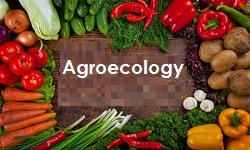
Natural cultivating is the strategy for yield and animals creation that includes substantially more than deciding not to utilize pesticides, manures, hereditarily adjusted creatures, anti-microbials and development chemicals. At the end of the day, it is alluded to as, low information cultivating and utilizes regular wellsprings of supplements like fertilizer, crop buildups and compost, and normal techniques for yield and weed control, rather than utilizing engineered or inorganic agrochemicals. OBJECTIVES OF ADOPTING
Track 2: ORGANIC FARMING
Organic farming may be adopted to achieve the following benefit
- To increase genetic diversity
- To promote more usage of natural pesticides
- Ensure the right soil cultivation at the right time
- Keep and build good soil structure and fertility
- Control pests, diseases and weeds
METHODS OF ORGANIC FARMING
1. Soil management
2. Weed management
3. Mulching
4. Mowing or Cutting
5. Crop diversity
6. Monoculture
7. Controlling other organisms
8. Raising Livestock Farming
9. Genetic modification
We should practice organic agriculture in a careful and responsible manner to benefit the present and future generations and the environment with food supply.
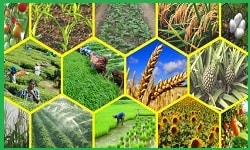
Track-3 Integrated farming
IIntegrated farming (commonly known as mixed farming) is a farming system with continuous activities including animal and crop. Integrated agriculture includes systems of farm with economic, environmental, social, and intergenerational sustainability. In an integrated and sustainable agriculture system the goal is not necessarily producing immediate outputs, but rather it maintains a system of healthful production, over time. The major components of a sustainable system include community, environment, and economy. This mixed farming system recycles all wastes so that little is thrown away: someone’s waste is indeed another’s food.
The resource that must be managed in such a way that it takes all of these related components into account. Economically, the farm works full fill the
sound manner, with the preservation of natural resources including water, soil and air. The operations also sustainably provide access to food to everyone in the community, which allows for opportunities for cooperative relationship.

Track-4 Crop Protection
Plant irritations and illnesses can crash ranchers' persistent effort and cause critical misfortunes to yields and wages, representing a significant danger to food security. Globalization, exchange and environmental change, just as diminished flexibility underway frameworks because of many years of horticultural escalation and biodiversity misfortune, have all had an influence in the sensational increment and spread of trans limit plant irritations and infections. Nuisances and infections can undoubtedly spread to a few nations and arrive at pandemic extents. Episodes and upsurges can make colossal misfortunes yields and fields, undermining the occupations of ranchers and the food and sustenance security of millions all at once.
Yield turn implies changing the kind of harvest become on a specific land parcel from one year to another. As utilized in this manual, the term incorporates both recurrent pivots, in which similar arrangement of yields is rehashed endlessly on a field, and non-repeating revolutions, in which the succession of harvests changes sporadically to meet the advancing business and the board objectives of the rancher. Great yield pivot requires long haul key arranging. Yield pivot is the act of growing a progression of divergent or various kinds of harvests in similar region in sequenced seasons. It is done as such that the dirt of ranches isn't utilized for just one bunch of supplements. It helps in lessening soil disintegration and builds soil ripeness and harvest yield.
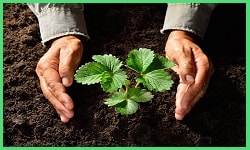
Track-5 Sustainable Agriculture
The objective of practical farming is to meet society's food and Agri, food, Aqua needs in the present without compromising the capacity of people in the future to address their own issues. Experts of reasonable farming try to incorporate three principle targets into their work: a sound climate, monetary benefit, and social and financial value. Each individual associated with the food framework cultivators, food processors, merchants, retailers, buyers, and waste supervisors can assume a part in guaranteeing a supportable horticultural framework. Soil wellbeing assumes a fundamental part in raising sound, useful yields and domesticated animals. The many advantages of cover crops are progressively valued among ranchers. They assume a significant part in disintegration control, weed control, soil preservation and soil wellbeing. With cautious choice and the executives, they fit into any yield revolution or trimming framework, for example, no-till cultivating, and are indispensable to natural farming. Increase beneficial homestead pay Promote ecological stewardship Enhance personal satisfaction for ranch families and networks Increase creation for human food and fiber needs.

Track-6 Organic Farming Vs Conventional Farming
Natural cultivating is a particular kind of rural creation which is utilized to deliver fiber and food which limits ranchers from utilizing destructive manufactured pesticides. Natural Agriculture is an environmental creation the board that energize and improves Biological cycles, biodiversity and soil organic action. All produce meat, grains, dairy, eggs and strands should be inferred in a natural manner. A natural rancher relies upon expanding natural variety in the field to disturb living space for bother creatures, and keep up with soil richness. By permitting livestock admittance to the outside and taking care of them 100% natural food, a better homestead framework is made for human, creatures and the climate. Affirmed natural alludes to rural items that have been developed and created by uniform guidelines, and should be confirmed by associations that have been certify by the USDA.
|
Conventional Farming |
Organic Farming |
|
Centralization |
Decentralization |
|
Dependence |
Independence |
|
Competition |
Community |
|
Domination of nature |
Harmony with nature |
|
Specialisation |
Diversity |
|
Exploitation |
Restraint |
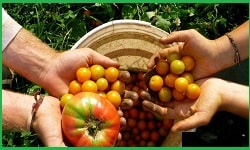
Track-7 Plant Genomics
Plant Genomics is the part of molecular biology working with the structure, function, evolution, and mapping of genomes in plants. Genomics is the study of genes, their expression and their activities, the role played in biology. Genomics is a branch of genetics that is concerned with the sequencing and analysis of organism's genome. Genomics aids us in maintaining the large number of database that assists us to study genetic variation.
Plant Genomics is the piece of sub-atomic science working with the design, capacity, development, and planning of genomes in plants. Genomics is the investigation of qualities, their demeanor and their exercises, the pretended in science. Genomics is a part of hereditary qualities that is worried about the sequencing and investigation of creature's genome. Genomics helps us in keeping up with the enormous number of information base that helps us to concentrate on hereditary variety.
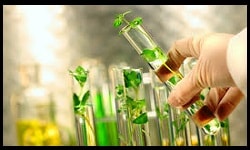
Track-8 Agricultural Biotechnology
Many new plant assortments being created or developed by ranchers have been delivered utilizing hereditary designing, which includes controlling the plant's qualities through procedures of present day sub-atomic science frequently alluded to as recombinant DNA innovation. These procedures are remembered for what is frequently alluded to as "biotechnology" or "present day biotechnology. Surveying the natural security of a biotech plant requires a comprehension of the science of the actual plant and the practices utilized in its development. This information is significant in distinguishing and assessing potential natural. The advancement of a viable public biosafety framework is imperative to empower the development of homegrown biotechnologies; to guarantee safe admittance to new items and innovations grew somewhere else; and to construct public certainty that items in the commercial center are protected. chances and furthermore in planning any proper danger the executives measures.
Ranchers Benefit from Agricultural Biotechnology Seeds. Many years of reported proof exhibits that agrarian biotechnology is a protected and advantageous innovation that adds to both ecological and financial maintainability. Ranchers pick biotech crops since they increment yield and lower creation costs.
Farmers Benefit from Agricultural Biotechnology Seeds. Decades of documented evidence demonstrates that agricultural biotechnology is a safe and beneficial technology that contributes to both environmental and economic sustainability. Farmers choose biotech crops because they increase yield and lower production costs.
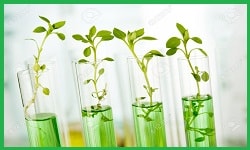
Track-9 Soil management
Soil management is an indispensable piece of land the board and may zero in on contrasts in soil types and soil attributes to characterize explicit intercessions that are meant to upgrade the dirt quality for the land utilize chose. Great soil structure further develops water penetration and diminishes overflow and disintegration. Very much organized soils are permeable and permit water to enter effectively, as opposed to running off to be lost to streams and waterways. Explicit mediations additionally exist to upgrade the carbon content in soils to moderate environmental change. Turning around the debasement of soil, water and natural assets and upgrading yield and domesticated animals creation through proper land use and the executives rehearses are fundamental parts in accomplishing food and business security.

Track-10 Horticulture & Agronomy
Horticulture is the investigation of horticulture that arrangements with the workmanship, science, innovation, and business of natural products, vegetables, blossoms and elaborate plants. It incorporates creation, improvement, promoting and logical investigation of restorative plant, organic products, vegetables, nuts, seeds, spices, sprouts, mushrooms, green growth, blossoms, kelp and non-food harvests like grass and decorative trees and plants. It additionally manages species preservation, scene reclamation, scene and nursery plan, the executives, and support, examination and showcasing. Horticulturists apply their insight, abilities, and advances to develop plants for human food and non-food utilizes like nursery or scene plan, enhancements and so forth Their field likewise includes plant proliferation and tissue culture to further develop plant development, enhancement, quality, healthy benefit, and obstruction and transformation solidarity to ecological anxieties. Significant agriculture segments are Arboriculture, Turf the executives, Floriculture, Landscape cultivation, Olericulture, Viticulture, Oenology, Postharvest physiology.

Track-11 Livestock Farming
Natural Farming focusses on the Livestock/Animal Farming. Animal Farming is depicted as "concentrating on the science of animals that are heavily influenced by humanity." It can likewise be portrayed as the creation and the board of livestock. All things considered, the degree was called creature farming and the animals contemplated were domesticated animals species, similar to cows, sheep, pigs, poultry, and ponies. Today, courses accessible now take a gander at a far more extensive region to incorporate buddy creatures like canines and felines, and numerous intriguing species. These days stress the board is additionally a piece of animals cultivating as it at last further develop item yield and quality. Pigs and poultry are raised seriously in indoor conditions. Be that as it may, indoor animal cultivating has frequently been condemned for a very long time - on grounds of contamination and for creature government assistance reasons. Domesticated animals cultivating assumes a significant part in the rural business and economy of significant emerging nations. They take a significant part in crop farming. Most homesteads in the creating scene are too little to even think about profiting farm truck or other hardware offices and their principle elective is animal force. The endless advantages of domesticated animals cultivating can decidedly impact in a development of agronomy, agro-economy, natural environment and other horticultural fields.
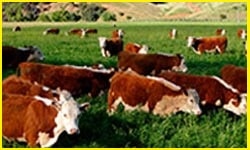
Track-12 Food and nutrition security
An arrangement direction for food security and wellbeing incorporate state-wise, past, current and future approach issues, and adapt savvy maintainability of agribusiness. The specific piece of food circulation in our general public can be inspected through the exploration of the progressions in the food inventory network. Globalization, specifically, effect sly affects the food store network by approving scale impact in the food distribution industry. Arrangement of a satisfactory measure of fundamental supplements to people has at any point been the test in the area of food security. Thus, ailing health is intensely interlinked to food security thought, yet hard to be dispensed with. food security and strategy, thusly, become attractive in the area of exploration.
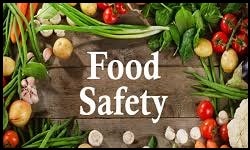
Track-13 Agricultural waste management
A farming waste administration framework (AWMS) is an arranged framework where all important parts are introduced and figured out how to control and use side-effects of agrarian creation in a way that maintains or improves the nature of air, water, soil, plant, animal, and energy assets. The essential target of most horticultural undertakings is the creation of attractive products. To be fruitful, the homestead supervisor should adjust the interest on restricted assets among many convoluted and associated frameworks, regularly including six essential capacities : Production, Collection, Transfer, Storage, Treatment, Utilization.

Track-14 Agricultural engineering
Agricultural Engineering is the space of designing worried about the plan, development and improvement of farming equipment and machinery. Rural designers coordinate innovation with cultivating. For instance, they plan better than ever cultivating hardware that might work all the more productively, or perform new undertakings. They plan and assemble rural framework like dams, water repositories, stockrooms, and different constructions. They may likewise assist with designing answers for contamination control everywhere cultivates. Some horticultural designers are growing new types of biofuels from non-food assets like green growth and rural waste. Such fills could financially and economically supplant fuel without imperiling the food supply.
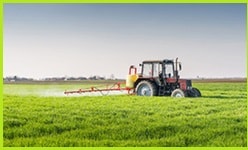
Track-15 Bio-fertilizers
Bio-compost innovation has shown guarantee for coordinated supplement the executives through biological Nitrogen obsession (BNF). Bio-composts may likewise be utilized to further develop Phosphate accessibility to crops. The adequacy of inoculants can shift with inoculant type, crop species, detailing, soil supplement level, soil pH/type, presence of applicable microorganisms in the dirt, and climate conditions.Bio-composts are living creatures that improve the supplement nature of the dirt. It alludes to the utilization of organisms rather than synthetics to upgrade the nourishment of the dirt; it is additionally less destructive and doesn't cause pollution.Main jobs of bio-fertilizers: Make supplements available. Make the root rhizosphere livelier.Growth-advancing substances are produced.More root proliferation.Better germination.Improve the quality and amount of produce.Improve the compost use efficiency.Higher biotic and abiotic stress tolerance.Improve soil health.Residual effect.Make the framework more sustainable"Biofertilizers are the item containing transporter based (strong or fluid) living microorganisms which are agronomically valuable as far as nitrogen obsession, phosphorus solubilization or supplement preparation, to expand the usefulness of the dirt or potentially crop"Biofertiliser applications : Seed treatment | Seedling root plunge treatment | Soil treatment
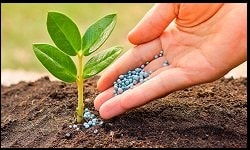
Track-16 Transgenic Plants
Transgenic plants will be plants that have been hereditarily designed a reproducing approach that utilizes recombinant DNA techniques to make plants with new qualities. They are recognized as a class of hereditarily altered life form (GMO). The point is to acquaint another quality with the plant which doesn't happen normally in the species. A transgenic plant contains a quality or qualities that have been misleadingly embedded. This interaction gives benefits like further developing time span of usability, better return, worked on quality, bug opposition, lenient to hotness, cold and dry season obstruction, against an assortment of biotic and abiotic stresses. Cisgenic plants are comprised of utilizing qualities, found inside similar species or a firmly related one, where customary plant rearing can happen. A few raisers and researchers contend that cisgenic adjustment is helpful for plants that are hard to crossbreed by ordinary strategies
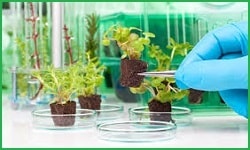
Track-17 Agribusiness Management
Agricultural business management is the use of business fundamentals to improve the agricultural industry and farm production. Agricultural business management, also called, applies business theories and practices to the agricultural industry to lower costs, boost profits and ensure that farm or food products are grown and distributed effectively. Agricultural business, also known as agribusiness, is the farming, management, production, and marketing of agricultural commodities, such as livestock and crops. The agricultural business field includes resource management, farming, conservation and crop improvement.
Agrarian business the executives is the utilization of business essentials to work on the rural business and ranch creation. Agrarian business the board, additionally called agribusiness management, applies business speculations and practices to the horticultural business to bring down costs, support benefits and guarantee that ranch or food items are developed and circulated successfully. Agrarian business, otherwise called agribusiness, is the cultivating, the board, creation, and promoting of horticultural products, like animals and harvests. The agrarian business field incorporates asset the board, cultivating, preservation and yield improvement.
Track-18 Irrigation management
The objective of irrigation management the executives is to utilize water in the most beneficial manner at maintainable creation levels. For creation agribusiness this for the most part implies enhancing precipitation with water system. Water system the board with controlled water deficiency permits a superior utilization of downpour water and animates extending of the root framework, expanding the volume of the dirt which is investigated by the foundations of the plants. The applied water profundity in every water system is lower than the water amount needed for the yield, yet its worth should be sufficient not to fundamentally influence the turn of events and efficiency of the harvest. It is critical to item quality in vegetable yields. Change in the specific locale from dry land to inundated horticulture, or from flood and low-productivity sprinkler irrigation, to focus turn and trickle water system frameworks. The substance of certain phytochemicals is identified with natural product size and development stage, characteristics that are drastically affected by water system; in any case, the connection among water system and phytochemical content is perplexing.

Track-19 Organic food and beverages Market
Organic foods and beverages offer ample advantages over such as health benefits, free of harmful chemicals, and others. The global market is poised to witness significant growth during the forecast period, owing to increase in income levels, rise in awareness regarding advantages of organic products, and advancements in organic farming techniques. The demand for organic food and beverages is anticipated to increase day by day by. Organically grown fruits and vegetables have high nutritive value, and are free from pesticides and other chemicals. Furthermore, organic nondairy beverages are in high demand among consumers due to increase in health awareness among consumers.
Natural food sources and refreshments offer adequate benefits over conventional foods sources, for example, medical advantages, liberated from hurtful synthetics, and others. The worldwide market is ready to observe critical development during the figure time frame, attributable to increment in pay levels, ascend in mindfulness with respect to benefits of natural items, and headways in natural cultivating strategies. The interest for natural food and refreshments is expected to expand step by step by. Naturally developed leafy foods have high nutritive worth, and are liberated from pesticides and different synthetic compounds. Moreover, natural nondairy drinks are sought after among shoppers because of expansion in wellbeing mindfulness among purchasers.

Track-20 Agricultural climatology
Agricultural climatology is a branch of science that concerns itself with the influence of climate on the cultural conditions of agricultural plants, animal husbandry, the occurrence of detrimental influences (both biological and weather conditioned) especially on agricultural operating methods. Weather and its longer term variant, climate, remain among the most important uncontrollable variables in agricultural production systems. The climatology group is involved in a wide variety of agrometeorological and agroclimatological research pattern, decision making for the length of the growing season, the relation of growth rate and crop yields to the various climatic factors and hence the optimal and limiting climates for any given crop, the value of irrigation, and the effect of climatic and weather conditions on the development and spread of crop diseases. This discipline is primarily concerned with the space occupied by crops, namely, the soil and the layer of air up to the tops of the plants, in which conditions are governed largely by the microclimate.

-
Target Audience:
- Faculty of Agricultural Sciences, Students, Scientists
- Faculty of Plant Sciences, Students, Scientists
- Faculty of Animal Sciences, students, scientists
- Universities of Soil Sciences and Agriculture
- Scientists in forestry and landscaping
- Agricultural and plant associations and societies
- Entrepreneurs and exhibitors
- Research and training institutes
- Seed science and weed management researchers
- Experts in soil science and soil-plant nutrition
- Agriculture and food security
- Agricultural device manufacturing companies
- R&D laboratories, chemical and fertilizer industries
- Media partners and collaborators
- International delegates and world observers
- Students and young researchers.
Market Analysis
Introduction
Productive Agriculture and Organic farming methods combine the scientific knowledge of ecology and modern technology with traditional farming practices based on naturally occurring biological processes. Relatively recent innovations in seeds, chemicals and fertilizers have enabled agricultural producers to meet the ever-growing demands of a hungry world population. Even with the rapid increases in agricultural productivity, however, challenges for the agriculture industry to supply the growing global economy with sufficient supplies of agricultural staples are greater now than ever before.
Scope and importance
The basic principle in the organic farming system is to produce maximum yield with the highest possible quality. At the same time, it should not affect the soil fertility, soil health, and environment. Due to the extensive use of chemical fertilizers, there is a huge toll on humans with the poisonous effects. Hands more and more people are in search of organic fruits and vegetables. Hence there is a steep increasing the demand of organic farming system for Organic fruits, vegetables, and foods.
Why to Attend ???
The significance of agriculture in human life is significant. Agriculture and agricultural products are essential for us. Food, energy, medicine and so many things we are able to get from agriculture. This conference seeks to bring all such scientist, Noble Laureate, researcher, research scholar, students and people together who are involved in this field and provide them to discuss their innovation, exchange ideas and interact with each other.
Agricultural perspectives
- The Asia region is a decisive component in the global food chain, accounting for 19% of total global food and agriculture exports and 31% of total food and agriculture imports
- Asia’s large and growing population, coupled with rising incomes and a burgeoning middle class, will continue to drive demand for food & agricultural commodities and resources
- On the other hand, Asia cannot produce enough to support itself. Limited arable land, inadequate water and poor resource management, low farm yields, environmental and soil degradation and infrastructure inadequacy are limiting production. Consequently, Asia and especially China’s need for imports and investment locally and abroad is likely to increase
- Asia agribusiness and food & agriculture companies are likely to grow in size and scope to meet the increasing demand, national policies, rising organisational capabilities, and integration and consolidation throughout the value and supply chains
Factors limiting the agricultural production potential
Limited arable land and inadequate water resources in Asia form a natural ceiling to agricultural supply. Consolidation of farmland and better water management have the potential to boost production. At the same time, conflicting demands in land usage and water pollution act as constraints. Given a growing population and increasing demand for cereals for both food and feed, sustained increases in yields are required in Asia. However, factors such as changes in cropping patterns and diminishing returns on modern seed varieties have led to a stagnation of production growth in the last two decades. Increased use of fertilisers as farmers try to maintain productivity is also progressively degrading soil quality in many places. Increased usage of chemical pesticides has further compounded the issue of soil quality and environmental pollution. Here below are some of the major limiting Factors
- Small and fragmented holding size
- Water will be a key limiting factor
- Self-sufficiency policy
- Rising rural wages
- Impact of climate change
- The region lags in R&D spend in agriculture
- Investment in physical infrastructure (roads, ports, railway terminals)
- Storage and cold chain logistics
- Technology investment to improve farm productivity and farm-business connectivity
Country Profiles with International, Asia and Oceania Emerging Markets at China and Hong Kong, India, Indonesia, Malaysia, Philippines, Thailand, Vietnam, New Zealand, Australia
Fund Allotment to Agriculture & Organic farming Research
Agriculture Finance & Agriculture Insurance
- Agriculture finance empowers poor farmers to increase their wealth and food production to be able to feed 9 billion people by 2050.
- Our work in agriculture finance helps clients provide market-based safety nets, and fund long-term investments to support sustainable economic growth.
- Demand for food will increase by 70% by 2050; at least $80 billion annual investments will be needed to meet this demand.
- Grant Opportunities : International Fund for Agricultural Development (IFAD) | Terra Viva Grants | The Foundation Center | International Human Rights Funders Group | Global Giving’s | Environmental Defender Law Center | Philanthropic News Digest | Asia Pacific Philanthropy Consortium (APPC) | Global Philanthropy Alliance | The Indigenous Peoples Assistance Facility (IPAF) | Global Facility for Disaster Reduction and Recovery (GFDRR) | FOMA Charitable Trust | Global Index Insurance Facility (GIIF) | Global Food Price Crisis Response Program (GFRP) | Global Food Safety Partnership (GFSP)
Major Agricultural Industries in Worldwide:
The number of agricultural industries and services is growing at a faster rate in all around the world covering Asia, Europe, Africa, North and South America which are major regions of the world. Top 20 industries with their country name have been enlisted below:
- Kerry Group, Ireland
- Vilmorin, France
- Adler Seeds, US
- China Agri-Industries Holdings, China
- ContiGroup Companies, Belgium
- Case Corporation, US
- Golden State Foods, US
- Heritage Foods, India
- Noble Group, South America
- The Mosaic Company, US
- Monsanto, US
- Wayne Farms, US
- Dawn Meats, Ireland
- Groupe Limagarin, France
- Bayer Crop Science, Germany
- New Holland Agriculture, Italy
- John Deere Tractor, US
- CLAAS, Germany
- Skellerup, New Zealand
- Technofarm International, Libya
Agriculture Research centers worldwide:
- Consultative Group for International Agricultural Research, France
- Africa Rice Center, Benin
- Bioversity International, Italy
- Center for International Forestry Research (CIFOR), Indonesia
- International Center for Tropical Agriculture (CIAT), Colombia
- International Center for Agricultural Research in the Dry Areas (ICARDA), Lebanon
- International Crops Research Institute for the Semi-Arid Tropics (ICRISAT), India
- International Food Policy Research Institute (IFPRI), United States
- International Institute of Tropical Agriculture (IITA), Nigeria
- International Livestock Research Institute (ILRI), Kenya
- International Maize and Wheat Improvement Center (CIMMYT), Mexico
- International Potato Center (CIP), Peru
- International Rice Research Institute (IRRI), Philippines
- International Water Management Institute (IWMI), Sri Lanka
- World Agroforestry Centre (International Centre for Research in Agroforestry), Kenya
- WorldFish Center (International Center for Living Aquatic Resources Management), Malaysia
Global Agriculture Universities:
- University of California, U.S.
- China Agricultural University, China
- Universidade de São Paulo, Brazil
- Ghent University, Belgium
- Aarhus University, Denmark
- University Hohenheim, Germany
- University of Guelph, Canada
- University of Copenhagen, Denmark
- University of Western Australia, Australia
- University of Helsinki, Finland
- Swedish University of Agricultural Sciences, Sweden
- University of Valencia, Spain
- University College Dublin, Ireland
- University of Reading, United Kingdom
- Universidade do Porto, Portugal
- National Taiwan University, Taiwan
- Massey University, New Zealand
- National Taiwan University, Taiwan
- University College Dublin, Ireland
- Cornell University, United States etc...
Japan Major Universities:
- Tokyo University of Agriculture and Technology
- Kyoto Prefectural University
- Hokkaido University
- Kyushu University
- Nagoya University
- Kobe University
- University of Tsukuba
- Tohoku University
- Chiba University
- Osaka Prefecture University
- Gifu University
- Shinshu University
- Ibaraki University
- Shizuoka University
- Keio University
- Waseda University
References : https://www.ers.usda.gov/publications/pub-details/?pubid=40694
https://economics.rabobank.com/publications/2016/february/asia-pacific-agricultural-perspectives/
https://www.worldbank.org/en/news/press-release/2018/03/23/world-bank-lays-out-vision-for-cleaner-safer-agriculture-in-east-asia
https://www.statista.com/statistics/651784/asia-pacific-growth-rate-of-agriculture-sector-by-country/
https://www.ifad.org/en/
https://www.apec.org/
https://www.euromonitor.com/
http://www.maff.go.jp/e/data/stat/
https://www.marketsandmarkets.com/Market-Reports/organic-fruits-vegetables-market-230995550.html
https://www.grandviewresearch.com/industry-analysis/organic-foods-beverages-market
http://www.agropolis.org/cooperation/CGIAR-international-agricultural-research-centers.php
https://www.cgiar.org/research/research-centers/
http://mofa.gov.gh/site/?page_id=6501
https://knoema.com/JPAGRSTAT2017/japan-agricultural-statistics?prefecture=1000000-japan
http://www.unsiap.or.jp/
http://ricepedia.org/japan
http://www.fao.org/asiapacific/perspectives/agricultural-statistics/global-strategy/countries/en/
https://www.unescap.org/our-work/statistics/environment-and-agricultural-statistics
Conference Highlights
- Agroecology
- Principles of Organic Agriculture
- Integrated farming
- Crop Protection
- Sustainable Agriculture
- Organic Farming Vs Conventional Farming
- Plant Genomics
- Agricultural Biotechnology
- Soil management
- Horticulture & Agronomy
- Livestock Farming
- Food and nutrition security
- Agricultural waste management
- Agricultural engineering
- Bio-fertilizers
- Transgenic Plants
- Agribusiness Management
- Irrigation management
- Organic food and beverages Market
- Agricultural climatology
To share your views and research, please click here to register for the Conference.
To Collaborate Scientific Professionals around the World
| Conference Date | June 23-24, 2022 | ||
| Sponsors & Exhibitors |
|
||
| Speaker Opportunity Closed | |||
| Poster Opportunity Closed | Click Here to View | ||
Useful Links
Special Issues
All accepted abstracts will be published in respective Our International Journals.
Abstracts will be provided with Digital Object Identifier by




